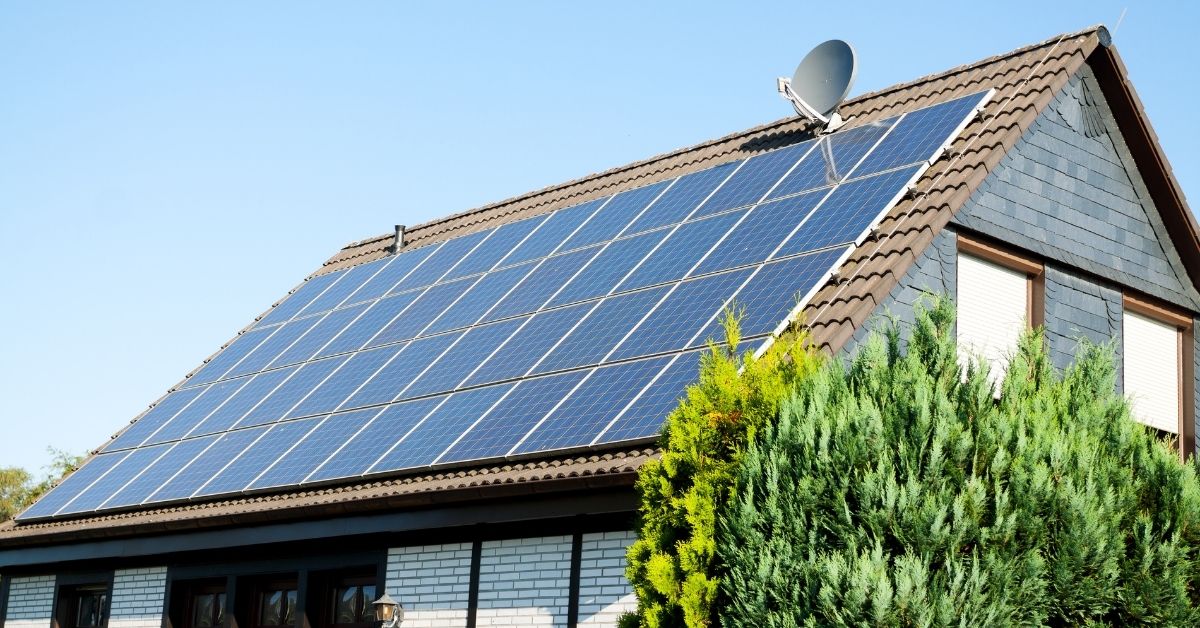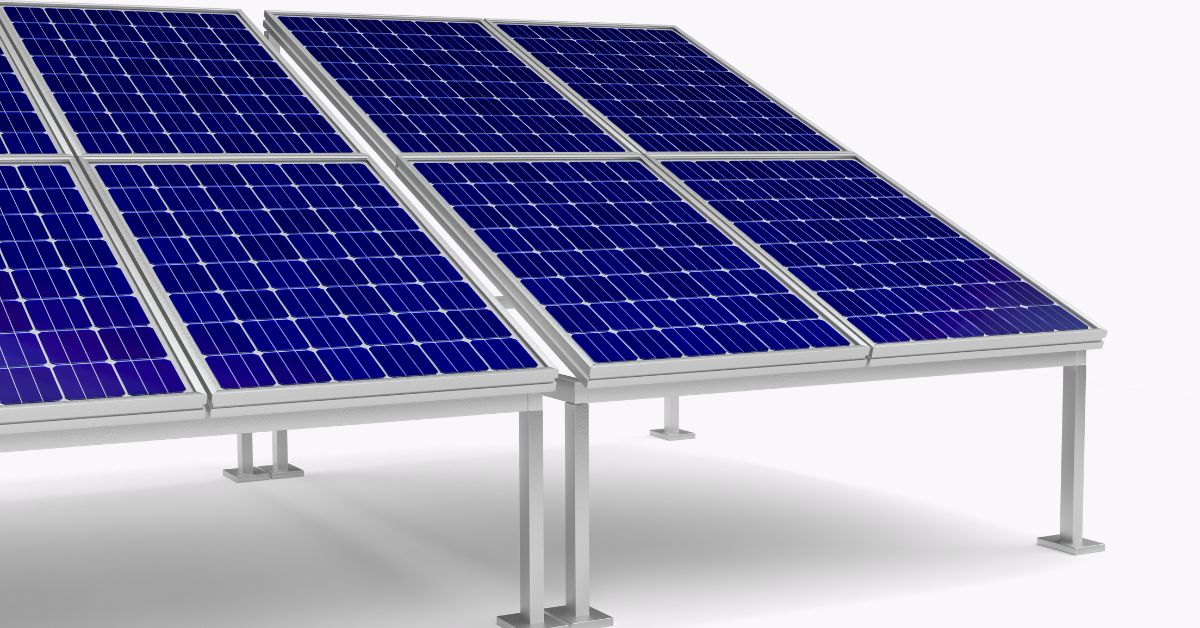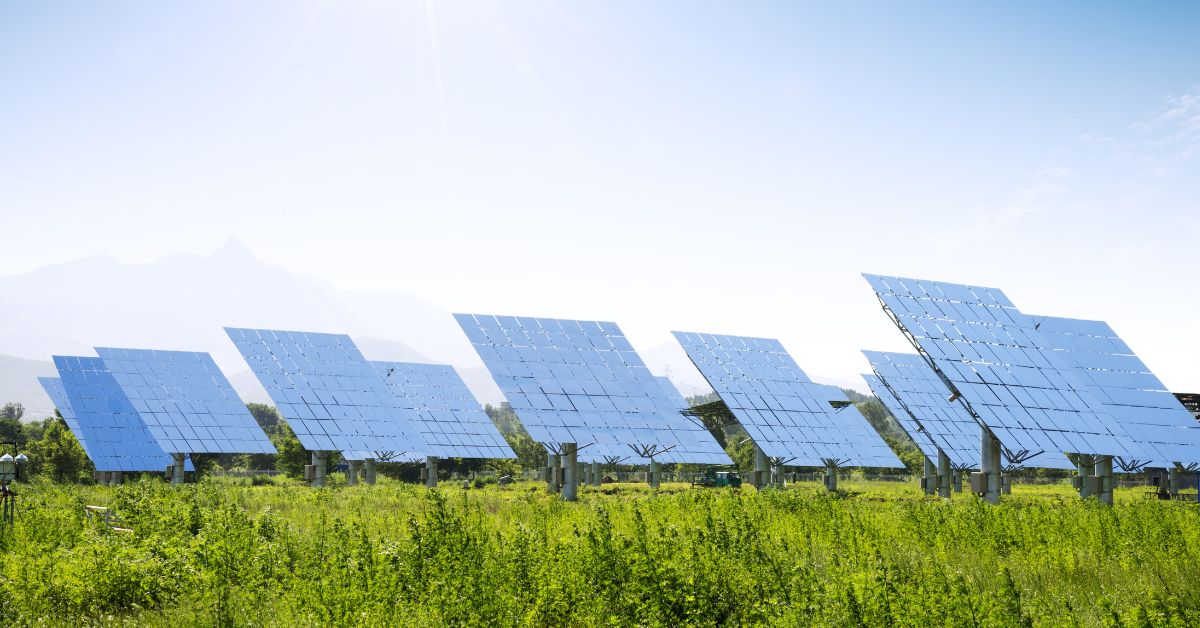Trends and Opportunities of Solar Systems for Commercial Building
Know the details about Trends and Opportunities of Solar Systems for Commercial Building, As businesses seek sustainable and cost-effective solutions, solar energy systems for commercial buildings are becoming a powerful trend. With advancements in photovoltaic technology, commercial solar installations now deliver greater efficiency and longer-lasting performance.
Lower installation costs, tax incentives, and government rebates further boost their appeal, making them financially attractive for companies of all sizes. In addition, solar systems reduce operational costs by cutting energy expenses and providing resilience against fluctuating utility prices. Opportunities abound in integrating solar with battery storage and smart grid technology, enabling businesses to achieve energy independence, improve environmental impact, and attract eco-conscious customers and investors.
Table of Contents
Trends and Opportunities of Solar Systems for Commercial Buildings
Solar energy is rapidly becoming one of the most critical renewable power sources for residential and commercial buildings. As businesses become increasingly aware of the environmental and financial benefits, solar systems have emerged as a viable and attractive energy solution. For commercial buildings, solar systems help reduce energy costs and contribute to sustainability initiatives, which are increasingly important in the global drive toward a cleaner environment.
This comprehensive guide delves into the key trends and opportunities surrounding solar systems for commercial buildings, discussing the technological advancements, financial incentives, and emerging opportunities that are shaping the future of solar energy in the commercial sector.
The Rise of Solar Energy in Commercial Buildings
Over the past decade, the adoption of solar energy has grown exponentially, and commercial buildings have played a significant role in this expansion. The rise in popularity is largely attributed to a combination of factors, including:

- Increased awareness of climate change: As the conversation around climate change intensifies, businesses are under more pressure than ever to reduce their carbon footprints. Solar energy presents an opportunity for companies to demonstrate their commitment to environmental sustainability.
- Cost reductions: The cost of solar panels has plummeted over the last decade, making solar energy more accessible for commercial properties. According to reports, solar panel prices have dropped by over 80% since 2010, enabling more businesses to invest in this clean energy source.
- Government incentives: Many governments are offering tax incentives, rebates, and grants for businesses that invest in renewable energy. These programs make it even more cost-effective for commercial building owners to install solar systems.
- Energy independence: Solar energy offers businesses an opportunity to reduce their reliance on traditional energy providers and fossil fuels, providing a measure of energy independence. In times of fluctuating energy prices, this can provide substantial long-term savings.
Trends in Commercial Solar Systems
Several key trends are driving the growth of solar systems for commercial buildings. By understanding these trends, businesses can position themselves to take advantage of emerging opportunities in the solar energy sector.
A. Declining Costs and Efficiency Gains
The cost of solar energy systems has decreased dramatically in recent years, primarily due to technological advancements and increased production efficiency. As a result, solar systems have become more affordable for commercial enterprises. In addition, advancements in photovoltaic (PV) technology have led to significant efficiency gains. Modern solar panels can convert more sunlight into electricity, allowing businesses to generate more power from smaller arrays.
B. Solar Storage Solutions
One of the major challenges of solar energy is its intermittent nature—solar power is only generated during the day, which can pose challenges for businesses that operate around the clock. However, recent advancements in energy storage technology have allowed businesses to store excess solar energy for use during periods of low sunlight. Battery storage systems are becoming more efficient, affordable, and scalable, allowing businesses to take full advantage of their solar installations.
C. Power Purchase Agreements (PPAs)
Power Purchase Agreements (PPAs) are increasingly popular among businesses that want to invest in solar energy without the upfront capital expenditure. In a PPA, a third-party developer installs owns, and operates a solar system on a commercial building, and the business purchases the power generated at a fixed rate. This arrangement allows businesses to benefit from solar energy without the need for a significant upfront investment.
D. Integration with Smart Technology
The integration of solar systems with smart technology is another key trend in the commercial sector. Smart energy management systems allow businesses to monitor their energy consumption in real time, optimize energy use, and reduce costs. By integrating solar systems with smart grids and energy management platforms, commercial buildings can maximize the efficiency of their solar installations and further reduce their reliance on traditional energy sources.
E. Building-Integrated Photovoltaics (BIPV)
Building-integrated photovoltaics (BIPV) is an emerging trend in commercial solar systems that integrates solar panels directly into the structure of the building. Rather than installing traditional solar panels on the roof, BIPV systems incorporate solar cells into building materials such as windows, facades, and roofing tiles. This allows businesses to generate electricity without compromising the aesthetics or functionality of their building design.
Opportunities for Commercial Buildings Adopting Solar Energy
As solar energy continues to evolve, commercial buildings stand to benefit from a wide range of opportunities. From cost savings to sustainability initiatives, the adoption of solar systems presents numerous advantages for businesses.
A. Significant Energy Cost Savings
One of the most compelling reasons for commercial buildings to invest in solar energy is the potential for significant energy cost savings. By generating their electricity, businesses can reduce or eliminate their reliance on traditional energy providers, leading to lower energy bills. Over time, the cost savings from solar energy can offset the initial investment, making solar systems a financially attractive option for many commercial properties.
In addition to reducing energy costs, businesses that generate excess solar power may be able to sell the surplus energy back to the grid through net metering programs, further increasing their return on investment.
B. Enhanced Corporate Sustainability
Sustainability has become a critical component of corporate responsibility, and businesses are increasingly looking for ways to reduce their environmental impact. Solar energy allows companies to significantly reduce their greenhouse gas emissions, helping them meet sustainability goals and comply with environmental regulations.
Investing in solar energy can also enhance a company’s reputation among customers, investors, and employees. Many consumers prefer to do business with companies that demonstrate a commitment to environmental sustainability, and solar energy is a visible and impactful way for businesses to showcase their efforts.
C. Long-Term Energy Security
Energy prices are subject to fluctuations due to market conditions, political factors, and changes in supply and demand. By investing in solar energy, businesses can insulate themselves from these price fluctuations and achieve long-term energy security. Solar systems allow businesses to generate their power, reducing their reliance on external energy providers and offering protection against rising energy costs.
D. Attracting Tenants and Increasing Property Value
For commercial property owners, installing solar systems can make their buildings more attractive to tenants. Many businesses are actively seeking office space and commercial properties that align with their sustainability goals, and buildings with solar energy systems can offer a competitive advantage in the real estate market.
In addition to attracting tenants, solar installations can increase the overall value of commercial properties. Solar energy systems are considered a valuable asset, and buildings with solar capabilities often have higher property values than those without.
E. Access to Financial Incentives
Governments around the world are offering a wide range of financial incentives to encourage businesses to invest in renewable energy. These incentives can significantly reduce the cost of installing solar systems for commercial buildings.
- Tax credits: Many countries offer tax credits for businesses that invest in solar energy systems. For example, in the United States, the Federal Investment Tax Credit (ITC) allows businesses to deduct a percentage of the cost of installing solar systems from their federal taxes.
- Rebates: In addition to tax credits, businesses may be eligible for state or local rebates that further reduce the cost of solar installations.
- Grants and loans: Some governments and organizations offer grants and low-interest loans to help businesses finance solar energy projects.
By taking advantage of these financial incentives, businesses can significantly reduce the upfront cost of installing solar systems and accelerate their return on investment.
Challenges Facing Solar Energy Adoption in Commercial Buildings
While the adoption of solar energy presents numerous benefits for commercial buildings, there are also challenges that businesses must consider. Understanding these challenges can help businesses develop strategies to overcome them and maximize the potential of solar energy.

A. Upfront Costs
Despite the declining cost of solar panels and other system components, the upfront cost of installing a solar energy system can still be a significant barrier for many businesses. While financial incentives and tax credits can help offset some of these costs, businesses must carefully consider the financial commitment required to install solar systems.
Power Purchase Agreements (PPAs) and other financing options can help businesses overcome this barrier by allowing them to invest in solar energy without the need for significant upfront capital.
B. Roof Space and Structural Limitations
Not all commercial buildings are well-suited for solar installations. Buildings with limited roof space or structural limitations may not be able to accommodate the size of the solar array needed to meet their energy needs. In these cases, businesses may need to explore alternative solutions, such as ground-mounted solar systems or off-site solar farms.
C. Intermittency of Solar Power
One of the inherent challenges of solar energy is its intermittent nature—solar power is only generated during the day and can be affected by weather conditions. For businesses that require a consistent and reliable energy supply, this can pose a challenge. However, advancements in energy storage technology, such as battery systems, are helping to mitigate this issue by allowing businesses to store excess solar power for use during periods of low sunlight.
D. Regulatory and Permitting Issues
Installing solar systems on commercial buildings often requires navigating complex regulatory and permitting processes. Depending on the location of the building, businesses may need to obtain permits from local authorities, comply with zoning regulations, and adhere to building codes. These processes can add time and cost to solar energy projects, so businesses need to be aware of the regulatory landscape before proceeding with an installation.
Future Outlook for Solar Systems in Commercial Buildings
The future of solar energy for commercial buildings is bright, with continued advancements in technology, declining costs, and increasing demand for renewable energy solutions. Several key factors are expected to drive the growth of solar systems in the commercial sector in the coming years.

A. Technological Advancements
Ongoing advancements in solar panel technology, energy storage, and smart grid integration are expected to further enhance the efficiency and cost-effectiveness of solar systems for commercial buildings. As technology continues to evolve, businesses will have access to more advanced and reliable solar solutions.
B. Expanding Financial Incentives
As governments around the world continue to prioritize the transition to renewable energy, financial incentives for solar energy projects are likely to expand. This will further reduce the cost of solar installations for commercial buildings and encourage more businesses to invest in solar energy.
C. Increasing Demand for Sustainability
The global push toward sustainability and the growing awareness of climate change will continue to drive demand for solar energy solutions. Businesses that invest in solar systems will be well-positioned to meet the increasing demand for sustainable practices and benefit from the associated financial and reputational advantages.
D. Growth of Solar PPAs
The popularity of Power Purchase Agreements (PPAs) is expected to continue growing as more businesses seek to invest in solar energy without the need for significant upfront capital. PPAs provide a flexible and affordable option for businesses to access the benefits of solar energy, and their continued expansion will contribute to the growth of solar systems in the commercial sector.
FAQs About Trends and Opportunities of Solar Systems for Commercial Building
Q1. What are the main benefits of installing solar systems for commercial buildings?
Solar systems offer several benefits for commercial buildings, including reduced energy costs, a smaller carbon footprint, potential tax incentives, and increased property value. For many businesses, installing solar panels can also contribute to a positive public image, demonstrating a commitment to sustainability.
Q2. How long does it typically take for a commercial building to see ROI on a solar system?
ROI on solar systems generally ranges between 5-10 years, depending on factors such as energy usage, local electricity costs, system size, and available incentives. With advancements in technology, the ROI timeframe is trending shorter, enhancing the appeal for businesses looking to make a sustainable investment.
Q3. Are there any government incentives or tax benefits for installing solar panels on commercial buildings?
Yes, many regions offer federal, state, and local incentives, such as tax credits (e.g., the Federal Investment Tax Credit in the U.S.), grants, accelerated depreciation, and rebates, to offset installation costs. These incentives can vary, so businesses should check local policies.
Q4. How can businesses determine the optimal solar system size for their building?
The optimal system size depends on energy usage, roof or land space available for panels, and budget constraints. Energy audits and consultations with solar experts can help determine the ideal system to maximize efficiency and savings.
Q5. How do battery storage options impact solar system efficiency for commercial buildings?
Battery storage allows businesses to store excess solar energy for use during peak demand or at night, improving energy independence and lowering utility costs. Battery technology has advanced significantly, making storage more efficient and affordable, which is a major trend in commercial solar adoption.
Q6. Is it feasible to install solar on a leased commercial building?
Yes, solar leasing or Power Purchase Agreements (PPAs) are popular options for businesses in leased spaces. These arrangements allow the business to benefit from solar energy without upfront costs, as a third party owns and maintains the system.
Q7. How does the maintenance of solar panels impact their efficiency and lifespan?
Solar panels require minimal maintenance, mostly periodic cleaning, and annual inspections. Proper maintenance can extend their lifespan, which is generally around 25-30 years, and ensure efficiency remains high over time.
Q8. What are the recent technological trends in solar systems for commercial buildings?
Recent trends include bifacial solar panels, solar roof tiles, and higher-efficiency photovoltaic materials. Additionally, smart inverters and energy management software allow businesses to optimize energy usage in real time, further maximizing the benefits of solar energy.
Q9. How can businesses use solar energy to meet sustainability goals?
Solar energy reduces greenhouse gas emissions and reliance on non-renewable energy sources, helping businesses achieve sustainability goals. Some organizations may also pursue green certifications, such as LEED, which consider renewable energy use in the certification process.
Q10. What factors should a business consider before investing in a solar system?
Businesses should evaluate energy needs, location (sun exposure), financial incentives, available space, and energy storage needs before installing a system. Conducting a cost-benefit analysis and consulting with solar experts can provide a clearer understanding of the potential advantages and costs involved.
Solar systems present a wide range of trends and opportunities for commercial buildings. From significant energy cost savings to enhanced sustainability efforts, solar energy is an increasingly viable option for businesses looking to reduce their environmental impact and improve their bottom line. As technology continues to evolve and financial incentives expand, the adoption of solar systems in commercial buildings is expected to accelerate, providing businesses with even more opportunities to benefit from this clean and renewable energy source.
Click here to learn more about Trends and Opportunities of Solar Systems for Commercial Building
Click here to learn more about What is On Ground Solar System and How Does It Work

